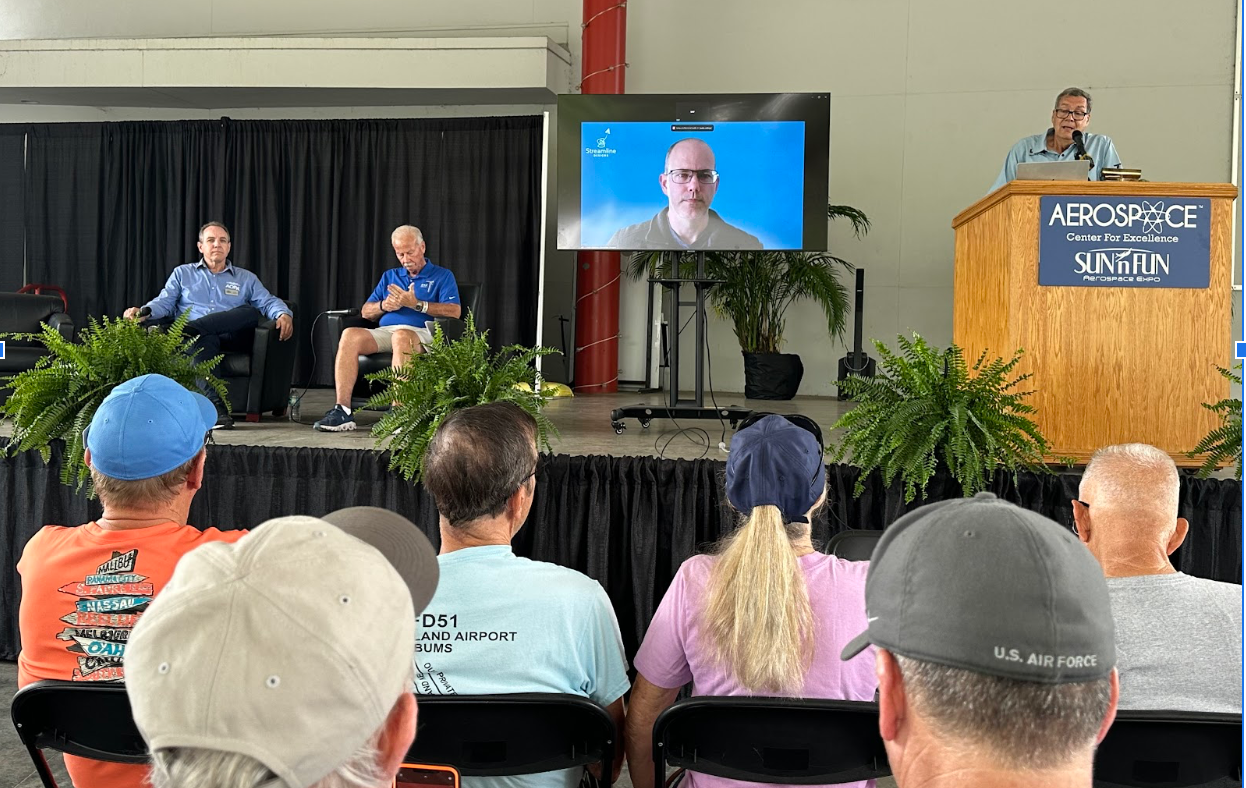Thoughts Interrupted?
Distractions are a dangerous element in flying, whether IFR or VFR. A distraction is the process of diverting one’s attention from a required area of focus or task— thereby hindering,…

Perhaps the most common victim of distraction is the landing gear. But fixation on a simple failed indicator can likewise bring the flight to grief.
Distractions are a dangerous element in flying, whether IFR or VFR. A distraction is the process of diverting one’s attention from a required area of focus or task— thereby hindering, or even completely blocking the reception of vital information or addressing a critical task.
Mental interruptions may be caused by several things; the lack of the ability to pay attention to a task at-hand; the absence of interest in the preferred object of attention; or more commonly, a shift of interest due to the novelty, the great intensity, or the attractiveness of something other than the required focus of attention.
Historical Reminders
Certainly, the consequences of a distraction in IFR can be fatal. Eastern Airlines Flight 401 is a grim reminder of this. In December, 1972 they crashed into the Florida Everglades when the entire cockpit crew became sidetracked by a burned out landing gear indicator light. Sadly, something as simple as a faulty landing gear indicator has accounted for a number of crashes with fatal results.
Distractions are not necessarily tempered by experience. In the Eastern Airlines case, this was an experienced crew. The uniqueness of this distraction to this crew is what led to their downfall. As we may recall in our early IFR training the radio was a major distraction that led to frequent altitude and course excursions. This was a distraction that, over time and experience, became easily managed to the point it was no longer a distraction but merely another component of flying to be dealt with in a systematic manner.
In April 2015, a Cessna 414A crashed on a night IFR approach. It was determined the glideslope antenna was not connected properly. We all train for a localizer only approach—and while this would have been an inconvenience—it shouldn’t have been fatal. Compounding this accident was poor handling characteristics due to an aft CG. Stress and fatigue can exacerbate our susceptibility to distractions. In this case the pilot had been awake for 18 hours and was dealing with a low cloud deck along with the malfunctioning glideslope that was probably diverting his attention.
Know Your Systems
Maintaining and knowing your aircraft will help alleviate distractions. I’ve flown with pilots that don’t know how to adjust the cockpit lighting or discover (too late) that vital instruments are not illuminated. A good thorough preflight and a cockpit review of all the switches could prevent future distractions.
Flying a few instrument approaches, especially after any maintenance, in VFR conditions could uncover potentially serious distractions before flying in actual IMC. In December 2013, the pilot of a Piper PA-46 reported difficulties with the autopilot in night IMC and subsequently crashed. Post-accident testing didn’t reveal any anomalies with the autopilot system. Regardless, the pilot should have disabled the autopilot if it was experiencing a problem and continue to hand fly the airplane.
Another fatal crash in night IMC during a climb was a Pilatus PC-12 in January 2013, which may have been autopilot related. The post-crash investigation showed an open resistor in the autopilot that might have been a pre-existing condition. If that were the case at the time of autopilot engagement, the unit would appear to activate—with a mode annunciation indicating such, but the pitch and roll servos would not be.
The before-taxi checklist included the autopilot system that would have verified proper operation before takeoff. Just prior to the crash the pilot was instructed to reset the transponder code. Whether the pilot engaged the autopilot to allow his attention to the transponder is unknown. Certainly, resetting the transponder was a distraction.
I always do the preflight—autopilot checks as well as engaging the autopilot in VFR conditions, to ensure it’s functioning properly before entering IMC. I also regularly hand fly my airplane in IMC to keep proficient. Could it be that pilots are becoming too wedded to technology and sacrificing basic flying skills?
Keeping A Clear Mind
The impact of distractions can be amplified by several potentially impairing drugs such as hydrocodone. These can increase a pilot’s susceptibility to becoming preoccupied with a normally inconsequential task. As a corollary, such drugs can also decrease a pilot’s attentiveness and thus cause them to miss important indicators. Discuss any medications thoroughly with your doctor to understand the potential impacts. Even over-the-counter drugs can dull our senses.
In some cases, it’s easy to determine that a distraction precipitated an accident, in others not quite so. In August 2015, a Cirrus departed on an IFR flight and, shortly after entering IMC, the pilot apparently became spatially disoriented and crashed. The pilot had announced departing from one runway but actually departed from another. Whether the pilot recognized his error is indeterminate, but it’s feasible that the situation presented the pilot with a distraction about the time the airplane was entering IMC, and could have initiated the pilot’s spatial disorientation.
Sterile Cockpit
Maybe the biggest distraction in the cockpit are the passengers. Consider implementing a sterile cockpit during critical phases of flight—primarily takeoff, landing and during an instrument approach. Inform your passengers they’re to remain silent during these phases until you say it’s okay to talk. You can also implement this technique through the audio panel if you know how to use this feature, which many pilots don’t. However, I stress during the briefing that should they see anything of a safety concern to point it out—so isolating them may not be a good idea. Extra sets of eyes are always a good thing.
I remember bringing several friends to a small airport in Virginia from New Jersey. It was IFR the entire way. On arriving it was clearly below minimums so I diverted to nearby Norfolk International. I had invoked a sterile cockpit. I can still remember this one faint voice in the back, full of apprehension as I broke out at minimums over Norfolk International with big airplanes all around saying, “Does he know where he’s going?”
Startle events, such as a door opening on rotation, need to be handled with calm aplomb. It’s events like these that will probably alarm passengers more than you.
Be In Command
If anything, distractions result in diverting our attention from our sacrosanct responsibility to focus on flying the airplane. Even the smallest can result in large departures from controlled flight. We can be our own worst enemy.
As the examples in this article show, night IMC can amplify the deleterious effects so extra vigilance is in order during periods of darkness. Stay ahead to prevent distractions from taking control of a flight.
Richard Lanning Ph.D. is a U.S. Naval Academy graduate, and a pilot for more than 30 years. He holds an ATP, CFIG, MEI, and CFII—and commutes to work by plane.
This article originally appeared in the February 2019 issue ofIFR Refreshermagazine.
For more great content like this, subscribe toIFR Refresher!






